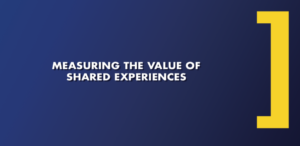
Guest post by John M. Bernard, author of the new book, Business at the Speed of Now, and Chairman and Founder of Mass Ingenuity.
Imagine going to work in one of Henry Ford’s factories a century ago, proud that management referred to you a “hand” or a “hammer” or maybe even a “wrench.” The labels reflected Ford’s emphasis on automation and management’s view of laborers as mere cogs in the machine.
Screw this nut onto that bolt; weld this strap to that frame; do it over and over and over again until your brain froze with boredom. Of course, management needed workers to get the numbing, repetitive work done, so they turned to the ideas of Frederick Taylor, a time-and-motion guru and father of so-called “scientific management.”
Scientific management took the “person“ out of “personnel” by exerting rigid managerial control over everything people did on the job. It tolerated no variation, brooked no questioning, and invited no suggestions for improvement. Yet it transformed Ford Motor Company into a huge and hugely profitable enterprise.
Ford’s success with the new Mass Production logic inspired other companies to follow suit. Soon, vast quantities of decent quality and affordable products were rolling off the assembly lines. As workers’ wages increased, they bought ranch-style homes in the suburbs, installed color television sets in their living rooms and parked shiny new Fords in their garages. Welcome to the great new American middle class.
That was THEN. This is NOW.
Times have changed. Nowadays, fewer than 10 percent of U.S. workers work on assembly lines. The other 90 percent work in environments where the old management logic clearly does not make sense (not to say it makes sense any longer in manufacturing). Yet Mass Production thinking still dominates our modern enterprises and even our schools and government.
People no longer accept the “cog in the machine” definition of work. They are independent, curious, quirky, passionate and emotional folks who demand that management put “human” back into “human resources.” They question authority (think Occupy Wall Street) and they want to improve everything in sight
Welcome to the new era of Mass Customization (a term Stan Davis popularized in 1987). It aptly describes today’s economy, where every customer wants what she wants, and she wants it NOW.

The shift from Mass Production to Mass Customization demands a fundamental shift in the way we manage our organizations. Centralized innovation and decision-making, the mainstays of the Mass Production era, simply cannot get results in a world where unlimited choice demands real-time response.
Of course, new technologies and the Internet play a huge role in enabling customization, but real-time value creation also demands human intervention. More than ever, the customer experience depends on flesh-and-blood people interacting with other flesh-and-blood people.
Profits also hinge on people. A Mass Customization economy benefits from a fully engaged workforce. Research by Gallup and other investigators proves that an employee who moves from disengagement to engagement not only thrills customers but bolters the bottom line to the tune of $13,000 a year.
Most companies have not capitalized on that new fact of corporate life. According to Gallup, only about 30 percent of the workforce takes action without instruction from the boss (engaged). Of the remaining 70 percent, roughly 50 percent merely show up and follow orders (disengaged), while close to 20 percent dissipate their creativity by actually disrupting the business (actively disengaged).
Management enjoys so many useful tools these days: Lean. Six Sigma. Employee Empowerment. Service Quality. Quality Circles. Team Building. Self-Directed Work Teams. Leadership Training. Management Development. Customer Satisfaction Programs. Employee Engagement Surveys. Suggestion Systems. Profit Sharing. Stock Options. The list could fill a dozen pages. So why, despite all the new-fangled, state-of-the art techniques at their disposal, do managers remain so stuck in the mud, with engagement declining, not improving?
The answer is perfectly simple. To paraphrase George H. W. Bush, “It’s the system, stupid.” The underlying management system determines culture; culture determines the degree of employee engagement.
The new era of Mass Customization demands the right sort of get-it-done culture. And that sort of culture requires nothing short of a fundamental rethinking of the basic management system we use to get things done.
With the shift from Mass Production to Mass Customization, forward-thinking businesspeople must take on the most crucial reengineering project of all, reshaping management’s role in a way that will close the employee engagement chasm.
It will take as much imagination and blood, sweat and tears as it did for Henry Ford to create the preceding era. Alan Mulally who’s running Ford these days, is doing exactly that.
A business that operates in the NOW must build a management system that provides clear direction and a line-of-sight to results for every employee. Such a system must generate true accountability, forge a common business language everyone understands, drive complete transparency, and ensure that everyone enjoys the appropriate resources, tools and skills to do their work spectacularly well. In this NOW world, management must complete its work before that all-important value-creating moment arrives for its inspired employees to thrill the customer and crush the competition.






Brian, can John respond to this? My question/observation: on the Mass Prod vs Mass Cust chart, it seems like the problem-solving descriptors are exactly OPPOSITE to what they should be. In the old paradigm of Mass Production, problem solving relied on standardization, while in our new “Mass Customization” approach, problem solving would be ad-hoc and intuitive (and the ground level, not tied to management bottlenecks). Am I missing something (or is there a flaw in the chart)?
Thanks, Ron.
Let him know that your question is here…thanks Ron.
Ron:
Great, insightful question. No, the chart is NOT incorrect. For employees to take action in the now they must understand solid problem solving techniques well enough so they can make good in-the-moment decisions. My experience has been few managers are comfortable giving employees the authority they need to make real-time decisions because these employees are not grounded in the skills to solve problems.
That said, following a structures and time-consuming problem solving method in real time is impossible. But, if employees have the skills they know which of them are useful to use in the moment. Like a great football strategist, all that knowledge is of greatest value when it can be applied just as the window of opportunity to win opens.
John
Great post! That was interesting.I like your quality that you put into your post.Please do continue with more like this.
So true -“management system determines culture; culture determines the degree of employee engagement.” When mangement recognizes and or are incented to recognize that employye value trumps share holder value things will improve. Employee value is barely lip service these days. The culture of grey haired men/women will move on and the grand expriement will evolve further.
Kpar:
Employees create shareholder value. It’s strange how that basic cause and effect seems to be understood by so few leaders.
John
John,
fair point…laid off employees also create shareholder value …not hiring new employees also creates shareholder value…i’ll stop here and leave culture/policy issues to another platform for futher discussion
Kevin
Great!
I’ve heard the theory of scientific management before. Glad to know more companies don’t follow that model nowadays. People are NOT like machines. They need incentives and sense of responsibility. Managers should make their employees think out of the box.
I am hoping the same best work from you in the future as well.
Wow nice!